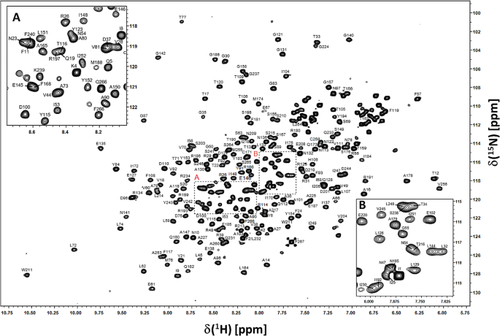1H, 13C, and 15N backbone and methyl group resonance assignments of ricin toxin A subunit
Abstract
Ricin is a potent plant toxin that targets the eukaryotic ribosome by depurinating an adenine from the sarcin-ricin loop (SRL), a highly conserved stem-loop of the rRNA. As a category-B agent for bioterrorism it is a prime target for therapeutic intervention with antibodies and enzyme blocking inhibitors since no effective therapy exists for ricin. Ricin toxin A subunit (RTA) depurinates the SRL by binding to the P-stalk proteins at a remote site. Stimulation of the N-glycosidase activity of RTA by the P-stalk proteins has been studied extensively by biochemical methods and by X-ray crystallography. The current understanding of RTA’s depurination mechanism relies exclusively on X-ray structures of the enzyme in the free state and complexed with transition state analogues. To date we have sparse evidence of conformational dynamics and allosteric regulation of RTA activity that can be exploited in the rational design of inhibitors. Thus, our primary goal here is to apply solution NMR techniques to probe the residue specific structural and dynamic coupling active in RTA as a prerequisite to understand the functional implications of an allosteric network. In this report we present de novo sequence specific amide and sidechain methyl chemical shift assignments of the 267 residue RTA in the free state and in complex with an 11-residue peptide (P11) representing the identical C-terminal sequence of the ribosomal P-stalk proteins. These assignments will facilitate future studies detailing the propagation of binding induced conformational changes in RTA complexed with inhibitors, antibodies, and biologically relevant targets.


 求助内容:
求助内容: 应助结果提醒方式:
应助结果提醒方式:


